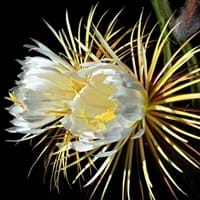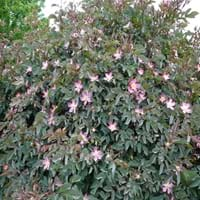Life Span
Perennial
Perennial
Type
Cactus or Succulent, Perennial
Flowering Plants
Origin
North America, Central America, South America
Central Europe, Polynesia, Southern Europe
Types
princess of the night, Honolulu queen
Not Available
Habitat
Desert, Semi desert
Dappled Shade, Sunny Edge, Woodland Garden
USDA Hardiness Zone
9-14
10-15
AHS Heat Zone
12 - 10
12-10
Sunset Zone
H1, H2, 12, 13, 15, 16, 17, 20, 21, 22, 23, 24
H1, H2, 24
Habit
Narrow Upright/Fastigiate
Arching/Fountain-shaped
Flower Color
Light Pink, White
Pink
Flower Color Modifier
Bicolor
Bicolor
Fruit Color
Pink, Purple, Salmon, Violet
Red
Leaf Color in Spring
Light Green
Green, Dark Green
Leaf Color in Summer
Green, Dark Green
Purplish Green
Leaf Color in Fall
Green
Copper
Leaf Color in Winter
Green
Blue Green
Leaf Shape
Succulent
Pinnate
Plant Season
Fall, Spring, Summer, Winter
Spring, Summer, Fall, Winter
Sunlight
Full Sun, Partial Sun
Full Sun, Partial Sun
Type of Soil
Loam, Sand
Loam, Sand
The pH of Soil
Acidic, Alkaline, Neutral
Acidic, Neutral
Soil Drainage
Well drained
Average
Bloom Time
Late Spring, Spring
Early Summer, Summer, Late Summer
Tolerances
Drought
Drought, Salt
Where to Plant?
Container, Ground, Pot
Ground, Pot
How to Plant?
Grafting, Seedlings, Stem Planting
Seedlings, Stem Planting
Plant Maintenance
Medium
Medium
Watering Requirements
Average Water Needs, Do not let dry out between waterings, Do Not over Water, Never Over-water, Requires consistently moist soil, Requires regular watering
Requires a lot of watering, Requires regular watering
In Summer
Lots of watering
Lots of watering
In Spring
Average Water
Moderate
In Winter
Less Watering
Average Water
Soil pH
Acidic, Alkaline, Neutral
Neutral, Slightly Acidic, Slightly Alkaline
Soil Type
Loam, Sand
Clay, Loam, Sand
Soil Drainage Capacity
Well drained
Well drained
Sun Exposure
Full Sun, Partial Sun
Full Sun, Partial Sun
Pruning
Prune to stimulate growth, Remove damaged leaves, Remove dead branches, Remove dead leaves
cut main flower spike, Prune in spring, Remove dead leaves, Remove deadheads
Fertilizers
fertilize every 2-3 weeks while growing
5-10-10 fertilizer
Pests and Diseases
Scale
Aphids, Black Spot, Japanese Beetles, Powdery mildew, Spider mites
Plant Tolerance
Drought
Wet Site
Flowers
Yes
Insignificant
Flower Petal Number
Semi-Double
Single
Foliage Texture
Bold
Bold
Foliage Sheen
Matte
Matte
Allergy
Diarrhea, Nausea, Vomiting
Asthma, contact allergic dermatitis, Rhinoconjunctivitis
Aesthetic Uses
Beautification, Landscape Designing, Showy Purposes
Borders, Bouquets, Showy Purposes
Beauty Benefits
Improve hair condition, Improve skin condition
good for lips, Improve skin tone, Moisturizing, Speed hair growth
Environmental Uses
Air purification
Air purification
Medicinal Uses
Antioxidants, cholesterol-lowering, Fever, Heart problems, Itching, Menstrual Disorders, Rheumatism, Treat Parasitic Intestinal Worms
anti-inflammatory, Antiseptic, Asthma, Dehydration, Dermatitis, Eczema, Eye Problems, Fatigue, Gallbladder Diseases, Liver problems, Sore throat, Stomach aliments, Swelling, Ulcers, Urinary tract problems
Part of Plant Used
Flowers, Stem
Flowers
Other Uses
Decoration Purposes, Economic Purpose, Employed in herbal medicine, Medicinal oil, Showy Purposes, Used as Ornamental plant, Used for its medicinal properties
Can be made into a herbal tea, Cosmetics, Culinary use, Edible syrup, Making Sweet Scented Oil, Oil is used for aromatherapy, Used as essential oil, Used as Ornamental plant, Used for fragrance, Used for its medicinal properties
Used As Indoor Plant
Yes
Yes
Used As Outdoor Plant
Yes
Yes
Garden Design
Container
Bedding Plant, Mixed Border
Botanical Name
CEREUS
Rosa glauca
Common Name
Night blooming cereus
redleaf rose, red-leaved rose
In Hindi
cereus
red leaved rose
In German
cereus
Rotblatt-Rose
In French
cereus
Rosa glauca
In Spanish
cereus
Rosa glauca
In Greek
cereus
Rosa glauca
In Portuguese
cereus
Róża czerwonawa
In Polish
cereus
Róża czerwonawa
In Latin
cereus
Rosa glauca
Phylum
Tracheophyta
Magnoliophyta
Class
Magnoliopsida
Magnoliopsida
Order
Caryophyllales
Rosales
Family
Cactaceae
Rosaceae
Clade
Angiosperms, Core eudicots, Eudicots
Angiosperms, Eudicots, Rosids
Tribe
Hylocereeae
Not Available
Subfamily
Cactoideae
Rosoideae
Number of Species
Not Available
Season and Care of Cereus and Redleaf Rose
Season and care of Cereus and Redleaf Rose is important to know. While considering everything about Cereus and Redleaf Rose Care, growing season is an essential factor. Cereus season is Fall, Spring, Summer and Winter and Redleaf Rose season is Fall, Spring, Summer and Winter. The type of soil for Cereus is Loam, Sand and for Redleaf Rose is Loam, Sand while the PH of soil for Cereus is Acidic, Alkaline, Neutral and for Redleaf Rose is Acidic, Neutral.
Cereus and Redleaf Rose Physical Information
Cereus and Redleaf Rose physical information is very important for comparison. Cereus height is 250.00 cm and width 40.00 cm whereas Redleaf Rose height is 100.00 cm and width 90.00 cm. The color specification of Cereus and Redleaf Rose are as follows:
Cereus flower color: Light Pink and White
Cereus leaf color: Light Green
Redleaf Rose flower color: Pink
- Redleaf Rose leaf color: Green and Dark Green
Care of Cereus and Redleaf Rose
Care of Cereus and Redleaf Rose include pruning, fertilizers, watering etc. Cereus pruning is done Prune to stimulate growth, Remove damaged leaves, Remove dead branches and Remove dead leaves and Redleaf Rose pruning is done cut main flower spike, Prune in spring, Remove dead leaves and Remove deadheads. In summer Cereus needs Lots of watering and in winter, it needs Less Watering. Whereas, in summer Redleaf Rose needs Lots of watering and in winter, it needs Average Water.





